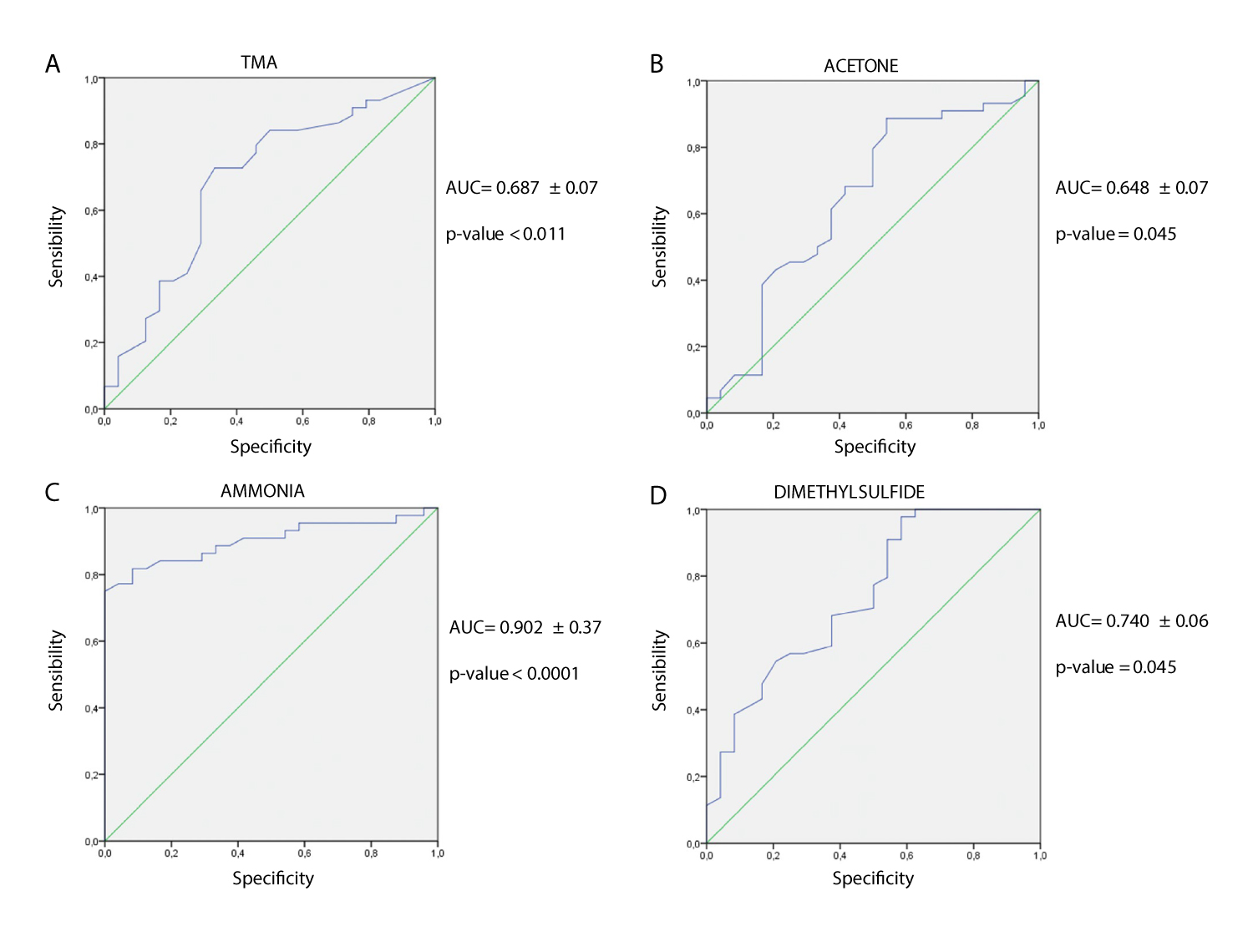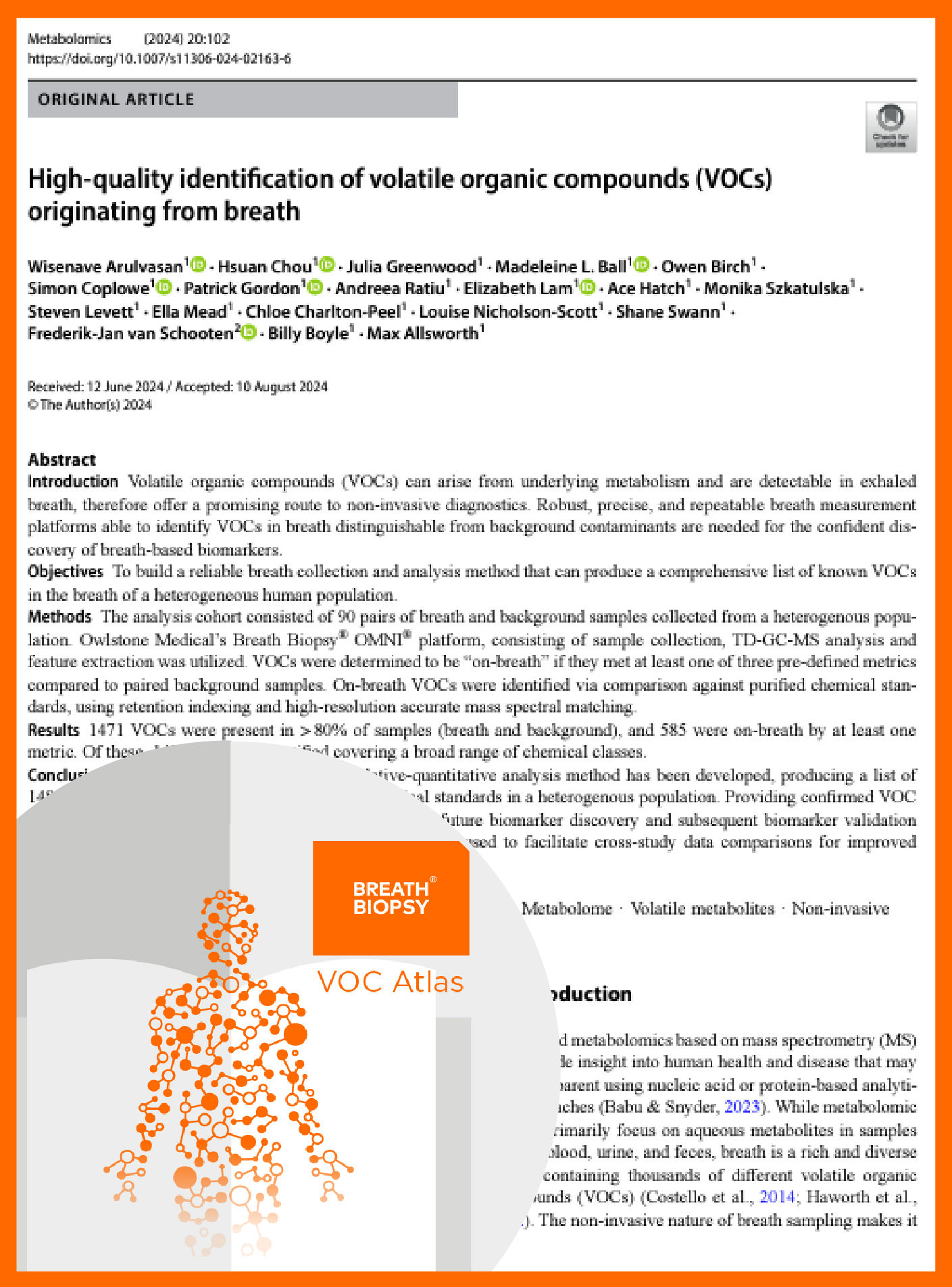Breath biomarkers show potential for diagnosing and staging kidney disease
Non-invasive screening and monitoring could save lives
| Publication information: Romani et al. Utility of SIFT-MS to evaluate volatile organic compounds in nephropathic patients’ breath Sci Rep. (2022) 12, 10413. DOI: 10.1038/s41598-022-14152-7
Disease Area: Chronic kidney disease (CKD) Application: Early detection, Non-invasive monitoring Sample medium: Breath Analysis approach: SIFT-MS Summary:
|
Around 37 million adults in the USA have chronic kidney disease (CKD) with 1 in 3 Americans at increased risk of developing it. CKD is characterized by a gradual deterioration of kidney function over time. This loss of kidney function leads to increased levels of waste products in the blood, increasing the risk of other cardiovascular diseases and causing high blood pressure, anemia, nerve damage and even weakened bones. Ultimately those with CKD have a shortened life expectancy and incur increased healthcare costs.
Early detection is key to preventing or delaying the progression of kidney disease to kidney failure, with lifestyle changes often being the most effective treatments, while the disease is still reversible. Unfortunately, because symptoms in the early stages of kidney disease are minor, they often pass undetected.
For thousands of years ‘fishy’ smelling breath and urine have been associated with renal disorders. This smell is now known to be caused by the presence of unusually high concentrations of amines. Some amines are exogenous volatile organic compounds (VOC) that are ingested as part of normal diet. In a healthy individual they would be processed by the kidneys, forming metabolites such as urea and formaldehyde which are excreted in urine. When kidney function is impaired amines will instead build up in the blood stream over time, and will increase in concentration, unmetabolized, on both breath and urine.
In the past amines (such as trimethylamine (TMA) in blood plasma have been suggested as possible biomarkers of kidney function, however, blood sampling is invasive and burdensome. If the same amines can also be detected on breath it may be that breath sampling would provide a better inexpensive and non-invasive solution for diagnosis and ongoing monitoring of CKD.
Methods
Romani et al. recruited 122 subjects, 68 patients with CKD (undergoing conservative therapies) and 54 healthy controls. All subject participants were encouraged to reduce the risk of sample bias due to environmental and dietary VOCs.

Table 1. Epidemiological features and homogeneity of the two study populations.
Exhaled breath samples were analyzed using SIFT-MS, which can provide quantitative, real-time analysis of pre-specified VOCs of interest. Each sample was the average of three exhaled breaths.
Results
The VOCs most frequently detected across subjects were TMA, acetone, ammonia, isoprene, acetonitrile, acetic acid, propanoic acid, ethanol, butanol, acetaldehyde, and dimethyl sulfide. Of these VOCs TMA, acetone, ammonia and dimethyl sulfide showed some potential to differentiate CKD subjects from controls.

Figure 1. ROC curves: AUC and p values of TMA (A), acetone (B), ammonia (C) and dimethyl sulfide (D). Abbreviations: AUC area under the curve; TMA trimethylamine.
Of the four diagnostic models that Romani et al. produced using these 4 VOCs, the ammonia-based model proved to be the most accurate differentiator (AUC = 0.902), and the model based on acetone alone had only modest predictive power (AUC = 0.648), however, combining the models produced by both ammonia and acetone improved the reliability of the diagnosis to 98.25%.
While the TMA model wasn’t generally as strong diagnostically as the ammonia model (AUC = 0.687), a TMA concentration of over 26 ppbv on exhaled breath suggested a more than 6 times greater risk of CKD, compared to subjects with a TMA concentration of 26 ppbv or lower. Breath TMA concentrations were also correlated with concentrations of both ammonia and acetone across the cohort, which may indicate that all of three of these VOCs are reporting on the same underlying metabolic mechanisms.
Within the CKD group, acetaldehyde and TMA concentrations both had statistically significant correlation with disease severity, with acetaldehyde performing best as a potential biomarker for staging CKD.
A common problem among biomarker discovery studies is elucidation of the specific mechanistic link between a given marker and the disease phenotype under investigation. For instance, increases in organosulfur compounds (like dimethyl sulfide) have been associated with increasing age, and additional work is necessary to validate the use of these VOCs as diagnostic biomarkers of CKD. Further work with much larger cohorts is therefore needed to validate these results, but Romani et al. are nonetheless happy to conclude that their results seem to support both the use of breath to diagnose kidney disease and, more tentatively, its potential as a monitoring tool to help stage kidney disease.
If you’re interested in looking for biomarkers of kidney and other metabolic diseases, we can help. We’ve developed Breath Biopsy® OMNI to deliver comprehensive and robust global breath VOC analysis. Trimethylamine is a naturally occurring chemical in foods such as fish, so may have potential for usage as an EVOC Probe.
Our in-house experts can guide you through everything from effective study design and optimized sample collection, to best practice analysis and interpretation procedures. We’ve rigorously tested OMNI to provide you with high-confidence results that support biomarker identification and validation. You can get all the details in our recent webinar.
